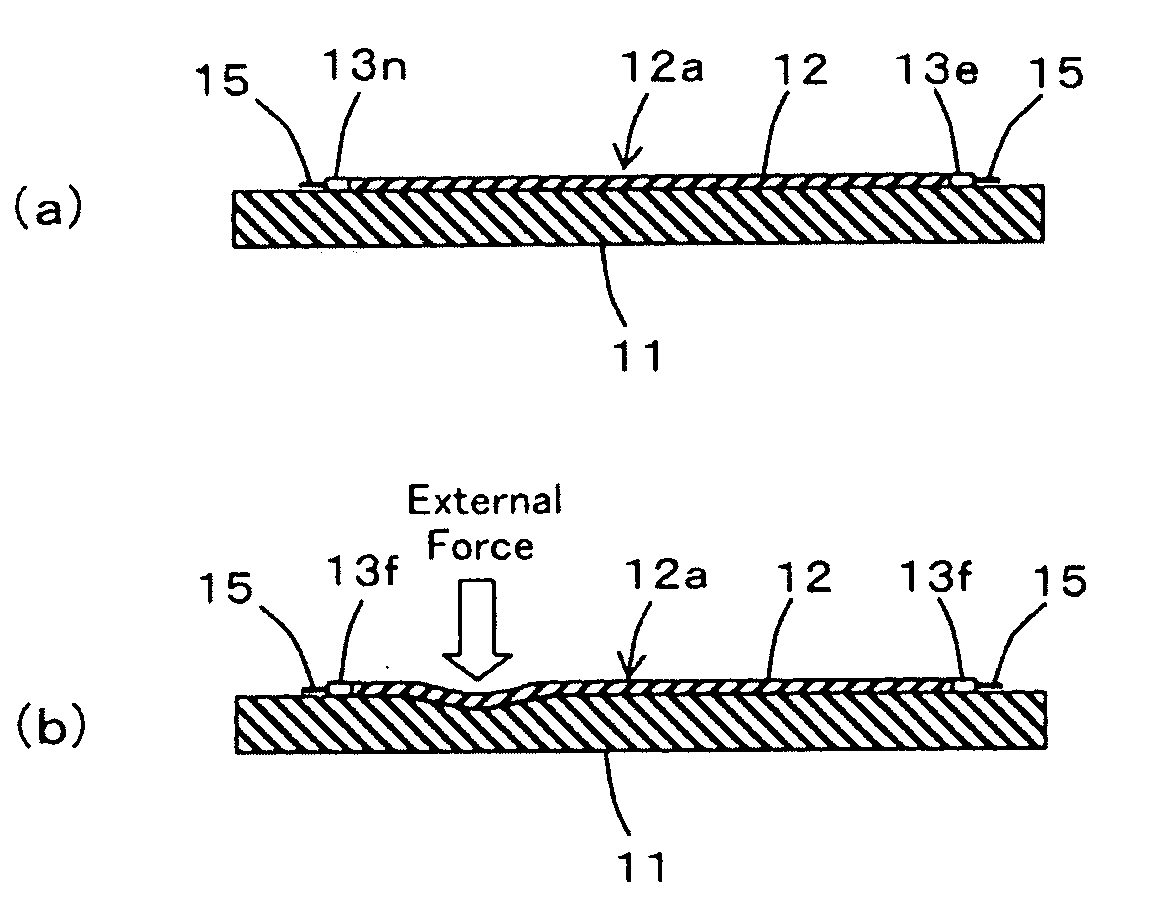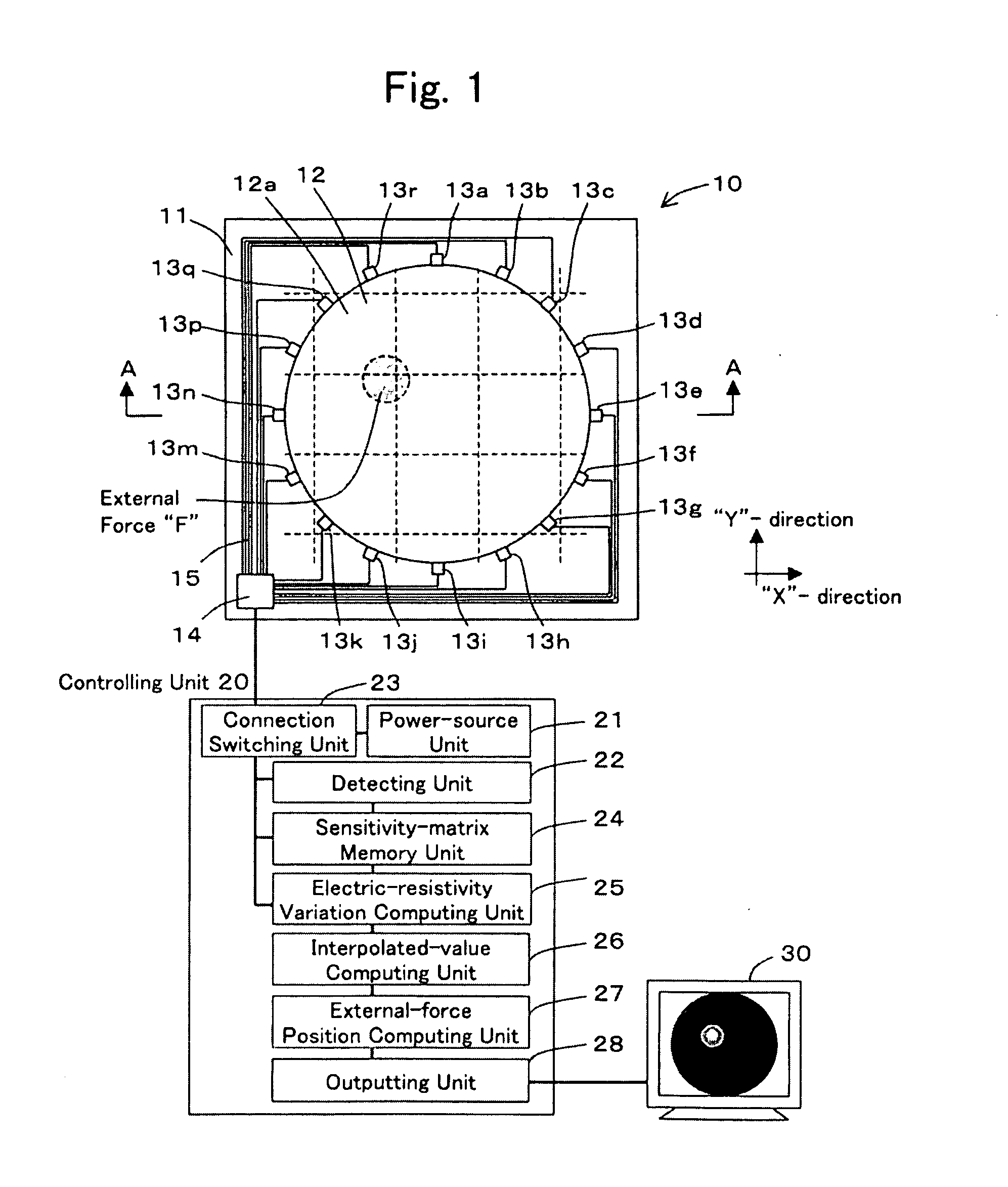Deformable sensor system
- Summary
- Abstract
- Description
- Claims
- Application Information
AI Technical Summary
Benefits of technology
Problems solved by technology
Method used
Image
Examples
first example
Modified Mode of First Example
[0130]A modified mode of the sensor structure 10, which constitutes the deformable sensor system of the First Example, will be explained with reference to FIG. 10. FIG. 10 is diagram for illustrating the modified mode of the sensor structure 10. Although the deformable sensor 12 was adapted into one that comprises one piece of a circular flat plate alone in the First Example, it is allowable that, as shown in FIG. 10, the deformable sensor 12 can comprise a solid three-dimensionally configured member and can have a plurality of the pressure-receiving surfaces 12a on its faces. In FIG. 10, all of the six faces are adapted into the pressure-receiving surface 12a, respectively. And, the electrodes 13 are disposed in a quantity of a plurality of pieces on the peripheral rim of the respective pressure-receiving surfaces 12a. In this case, it is possible to detect a position in each of the pressure-receiving surfaces 12a, position which receives an external f...
PUM
 Login to View More
Login to View More Abstract
Description
Claims
Application Information
 Login to View More
Login to View More - R&D
- Intellectual Property
- Life Sciences
- Materials
- Tech Scout
- Unparalleled Data Quality
- Higher Quality Content
- 60% Fewer Hallucinations
Browse by: Latest US Patents, China's latest patents, Technical Efficacy Thesaurus, Application Domain, Technology Topic, Popular Technical Reports.
© 2025 PatSnap. All rights reserved.Legal|Privacy policy|Modern Slavery Act Transparency Statement|Sitemap|About US| Contact US: help@patsnap.com



